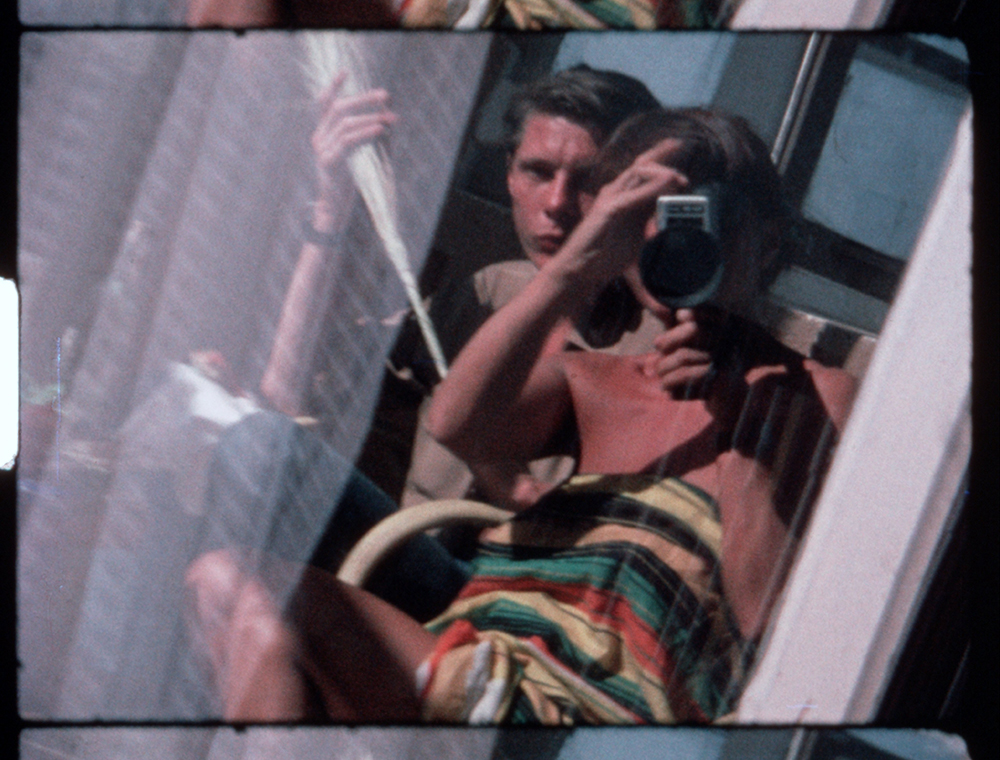Arabian Lights (1983), the travelog film directed by Jamie Nares and Edit deAk, feels like a clandestine home movie at first, like something you might stumble upon on the Internet Archive. In fact, it was always intended for exhibition, but if not for the efforts of the archivists at the Museum of Modern Art, it might have been lost to time. When Nares and deAk completed the film, they toured it informally around Europe and New York, showing it in lofts and artist studios to an audience of friends and orbiters of the No Wave scene. deAk had a variable speed projector and she would slow down or speed up the Super 8 film during each presentation, making each screening a unique experience. Yma Sumac, Alan Suicide, and 1960s girl groups served as the impromptu soundtrack to Nares and deAk’s Egyptian getaway.
The original Kodachrome print of Arabian Lights disappeared for decades, only to resurface when MoMA’s Department of Film acquired deAk’s archive after her death in 2017. Their new digital preservation allows audiences to see the film in its original glory, an assemblage of outtakes and new material that provides a glimpse into Nares and deAk’s artistic and romantic world. The film is ghostly in this way – it was so close to being lost that watching it feels like a once-in-a-lifetime experience. Arabian Lights is a travelog, but the landscape of Egypt is secondary to the relationship between the two filmmakers. Nares and deAk delight in capturing each other on Super 8 as they eat, drink, and wander around virtually empty landmarks (Nares explains the lack of tourists as the result of a recent terrorist attack). deAk films Nares strolling casually around the pyramids, and Nares films deAk charming a security guard. They ride bikes down deserted roads and sunbathe on their hotel balcony. The imprint of history disappears as the film becomes less about the destination and more about their burgeoning relationship.
Like many of Nares’s films, Arabian Lights plays with signs and symbols. It’s tongue-in-cheek in its psychoanalytic approach, a satire of gender and romance set against the backdrop of the great pyramids. It revels in phallic imagery, but it doesn’t take itself too seriously. Both Nares and deAk shoot roving images of each other’s bodies, but the shots always end with a laugh or a direct stare into the camera. Nares and deAk will often show people’s shadows cast on blank walls, but the shadows’ gender signifiers change every time you blink; they’re fluid representations. There’s a sense of joyous experimentation: what are the visual signifiers of falling in love? The beautiful Super 8 footage, with its rich colors and organic movement, frames all of the action as languid, imbuing even the most mundane objects with an erotic subtext. Nares and deAk are happy to let you in on their secrets, yet there’s a real mystery in its images, a code to crack. Arabian Lights isn’t a letter home that says wish you were here; rather, you wish you were there, and deAk and Nares know it.
Arabian Lights screens this afternoon, June 1, at the Museum of Modern Art as part of “Preoccupations: A Jamie Nares Retrospective.” It will be preceded by Edit deAk’s short film Jamie: A Portrait.



